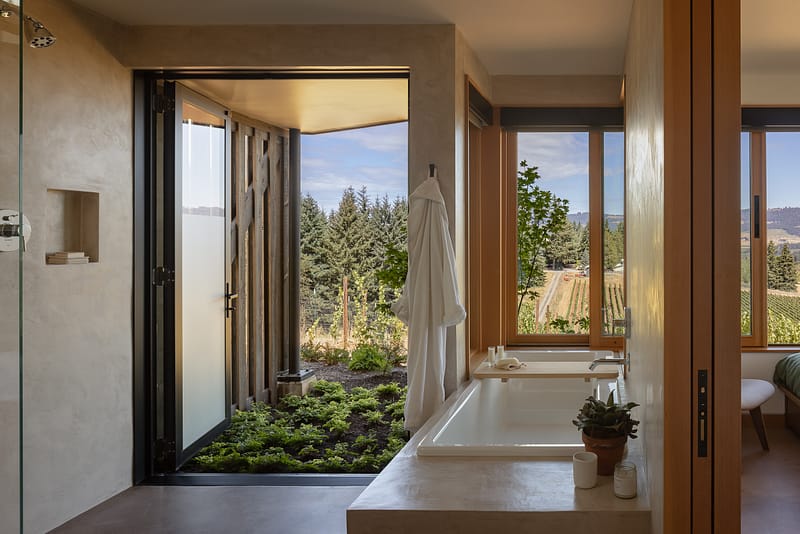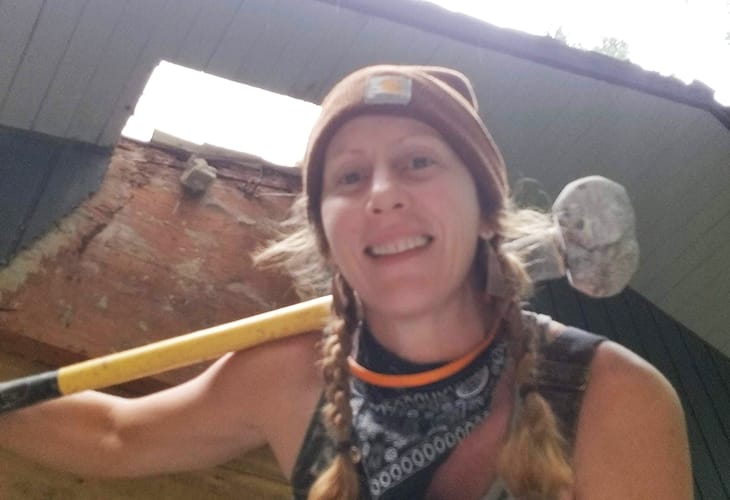This is the story of a slab. In particular, a young, large-for-its-years redwood slab that sat in a sawdusty barn in Albany until Jenny and Murray Jenkins came by, looking for a material to create a giant family table. This young slab caught their eye, and though it was covered in a thorough layer of dust and dirt, the Jenkinses saw the potential, and, feeling ready to take on the project, brought the slab home.
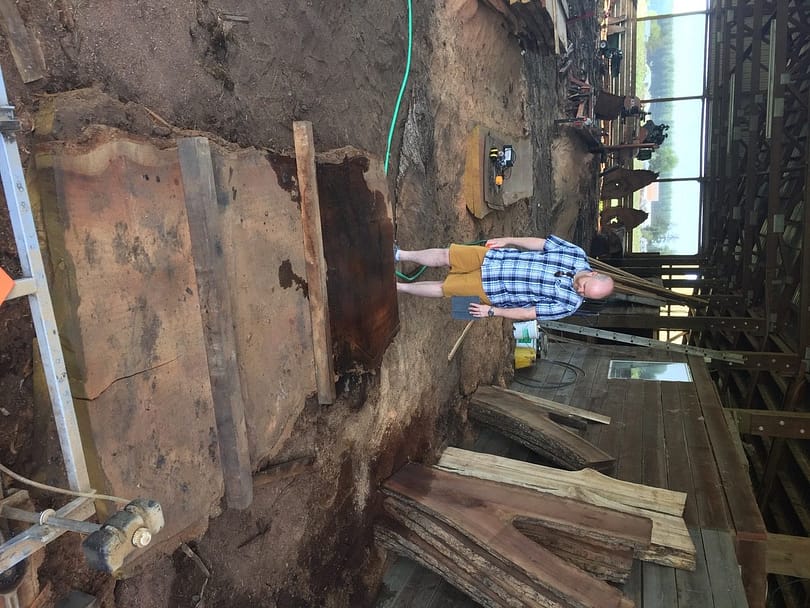
The slab sat in their garage for four months before they concluded that they might have gotten in a bit over their heads. At this time, a friend at Hammer & Hand reached out to see if our shop wizards could lend a hand. When MAC, H&H Operations Manager, and Dan Palmer, H&H’s Woodshop Manager, first inspected the slab, they noted a few obstacles in the way of the Jenkins’s dream table.
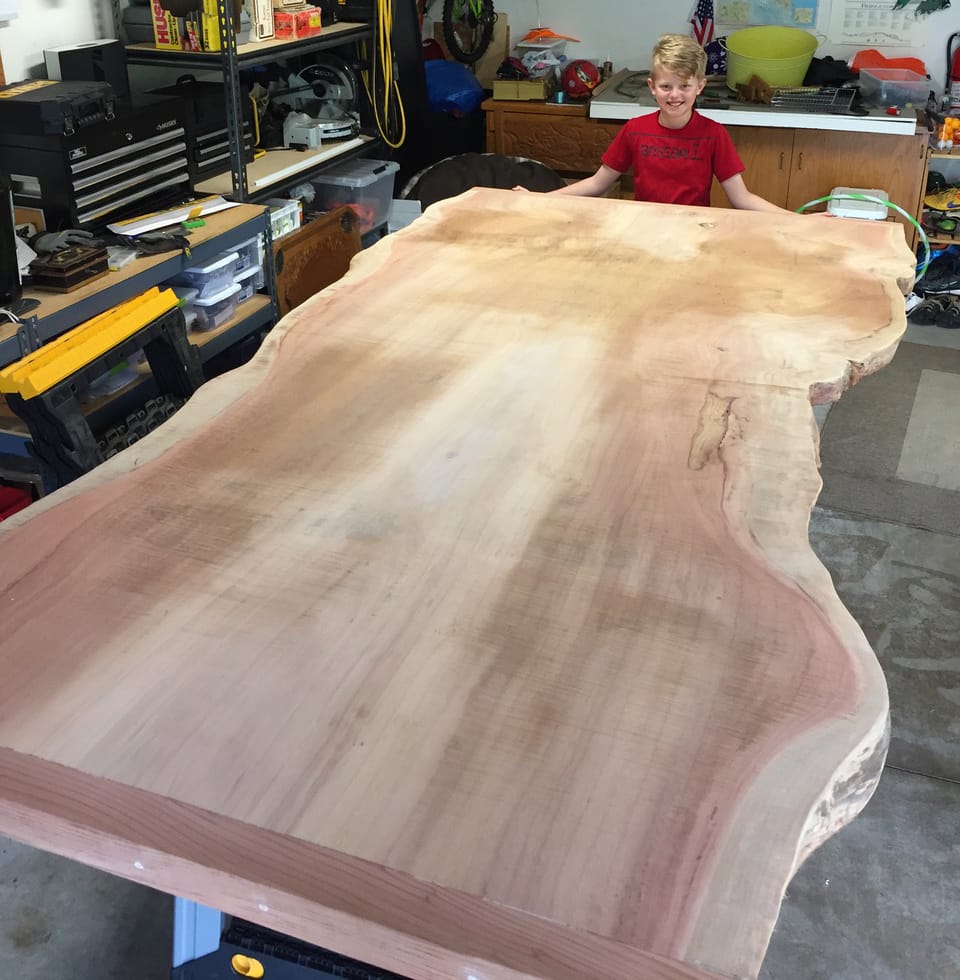
In an attempt to prevent the slab from twisting and bowing during the drying process, the seller had attached breadboards to each end with 5” screws drilled into the endgrain, a well-meaning attempt that had inhibited the natural flex of the wood during drying. Vast smears of beige wood filler had been applied to the cracks and knots that had opened up as the wood dried and the slab was cupped with the center rising 2” above the live edge, a serious hitch on the road to a table that wouldn’t send dishes sliding to their doom.
Dan and MAC discussed these complexities with the Jenkinses, but reiterated that the shop was confident they could work with the challenging source material. Dan proposed cutting the slab crosswise into three pieces, achieving a double golden ratio, mitigating the bowing while keeping the slab as thick as possible. To visually marry the segments, Dan proposed using two steel bands to serve as a striking design detail. Here’s an example of a similarly designed table Dan built for a client in New Hampshire:
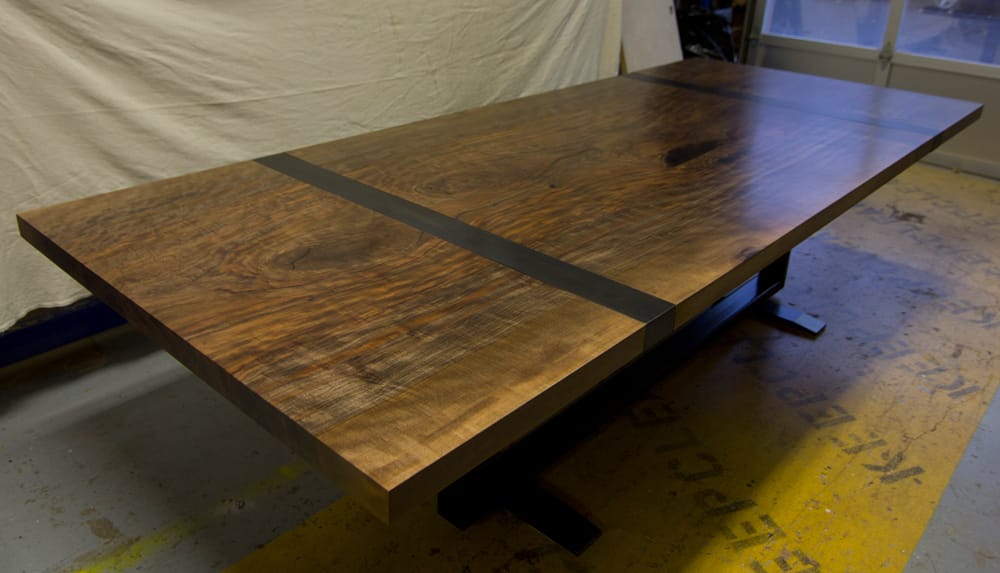
With this first solution resolved, Dan and the client got the creative wheels turning and worked out a plan for the leg detail based off of a photo the Jenkinses had found. After a few iterations, the team landed on chevron-shaped steel legs with the lines connecting to the table surface’s steel bands. Plan in place, Dan brought in the slab and let the wood acclimate to the shop before diving in.
Mac and Dan knew that the breadboards on the end of the table had to be removed to let the wood relax and return it to an unrestricted, stable state. The Jenkinses agreed to the removal. As soon as Palmer started the surgical action of removing the breadboards, it became clear that they had also been glued on, and as the screws and glue began releasing from the wood, the full amount of tension released and a crack instantly split a third of the way down the slab’s middle. Dan went to the other side, as he started removing the second breadboard, the slab contorted under the pressure’s full release, sides flaring like a taco shell before the crack cleaved the slab the rest of the way in half.
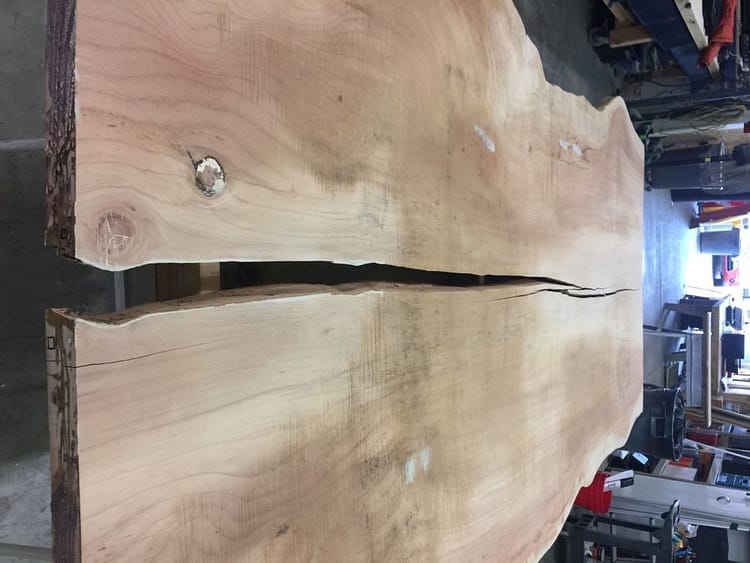
So, yes, it looked dire. But this twist of fate (and wood) presented new strategies for the slab’s revival.
“We were devastated,” Jenny recalls. “But it’s the best thing that happened, as the guys at Hammer & Hand were able to put it back together.”
The previous warping had eased immediately when the wood was able to relax, improving the slab’s overall condition. Dan and Mac knew the shop had the chops to fix it and wanted to get the table through primary sanding to prove that their theories would work. At that point, the Jenkinses could assess if they wanted to move forward with finishing the table or nix the project altogether. They agreed, and with a new plan in mind, Dan set to work with surgical precision.
With the split down the middle and the planned crosscuts, the slab was left in six pieces small enough to be fed through a 50” sander planer to help flatten it. A minor reverse cupping remained which Dan was able to pull out and straighten, effectively shimming the slab pieces by filling the wedge-shaped cracks with marine epoxy. Shop carpenter Josh Tinker then stepped in to add butterfly-shaped Oregon Walnut wedges along the central crack to work like sutures, preventing the crack from spreading or reopening.
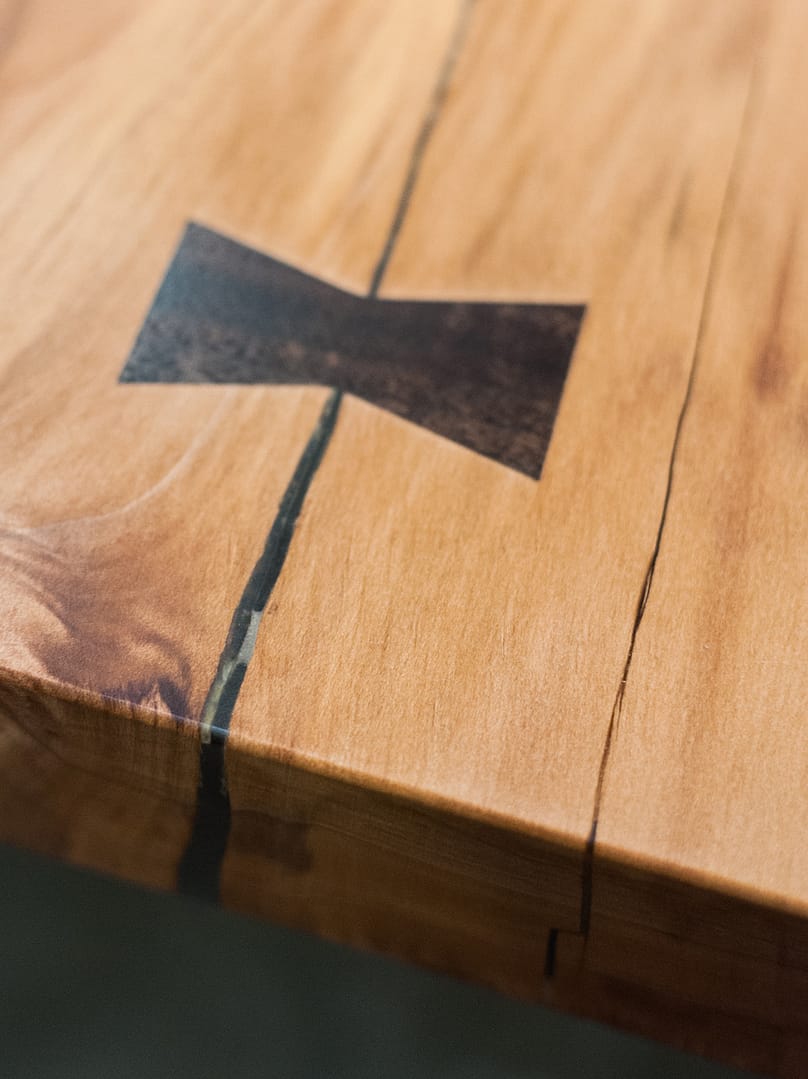
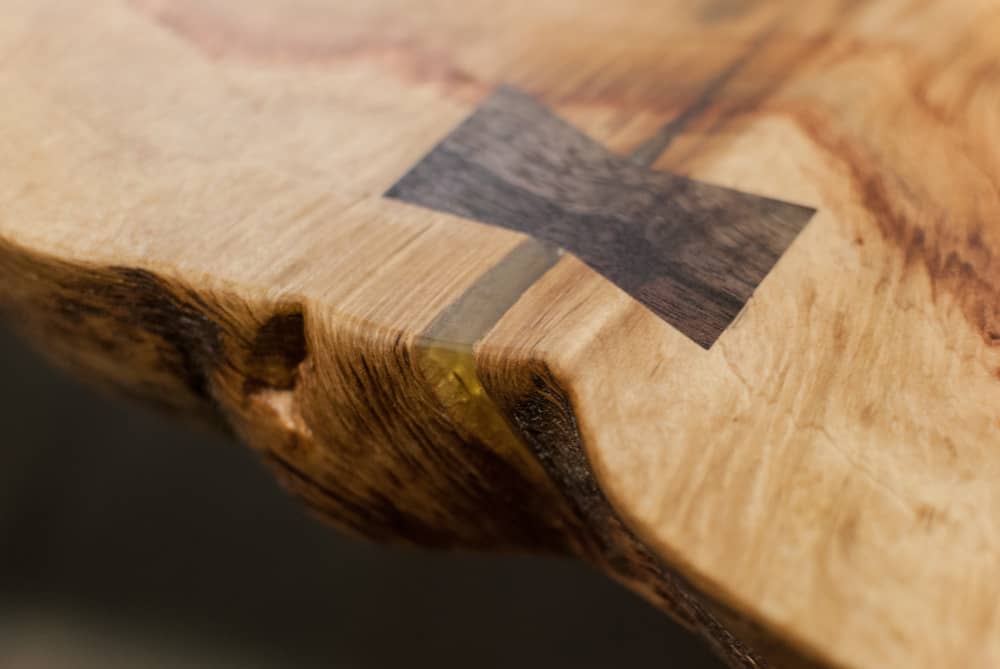
Encouraged by the progress on the slab, the Jenkinses gave the green light to finish the table. Thus far in the slab’s story, structural challenges had dominated the table. But with the wounds healed and the puzzle pieces reassembled, the slab wasn’t done with surprises. The initial sanding and coating revealed a truly beautiful piece of wood with striking figuring that had remained hidden.
Josh and the shop used a Rubio Monocoat penetrating oil floor finish for easy maintenance and a matte finish that doesn’t hinder the tactile feel of the wood. “The finish is absolutely perfect, it’s like butter,” Jenny says.

The shop worked with metal fabricator Brian Parnell of Parnell Design & Fabrication to mold and shape the edges of the steel bands to match the slab’s contours. It was a dance between the H&H shop and Brian to get the shapes just right, and after a few iterations they struck a true match. They added a gun blue finish to blacken and antique the steel over time, and a clear powdercoat over the finish to keep the steel’s care low maintenance for the clients.
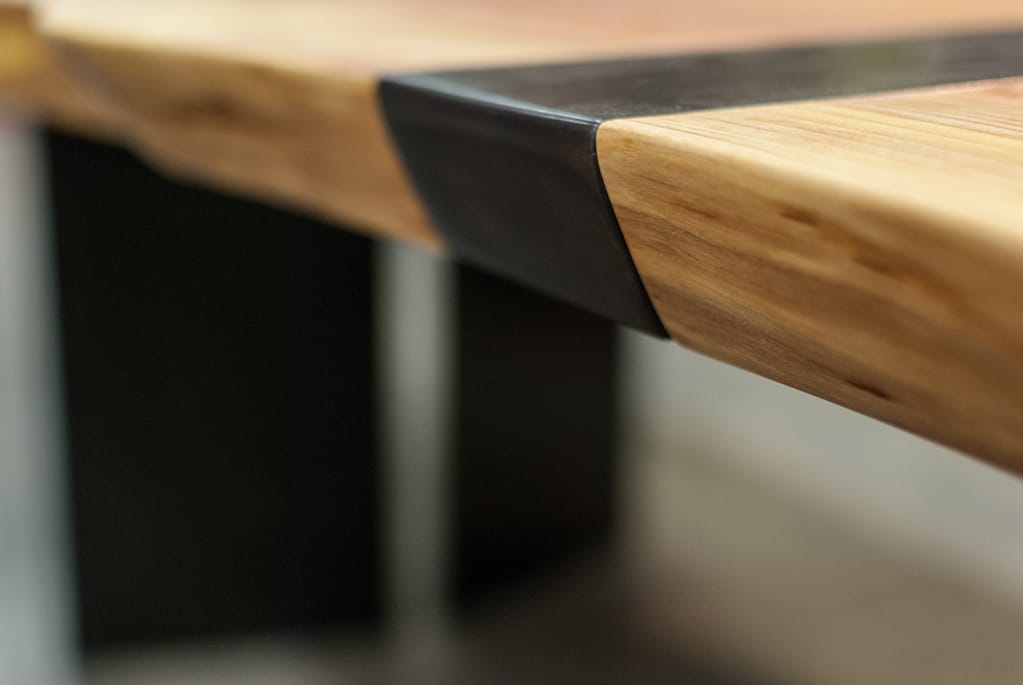
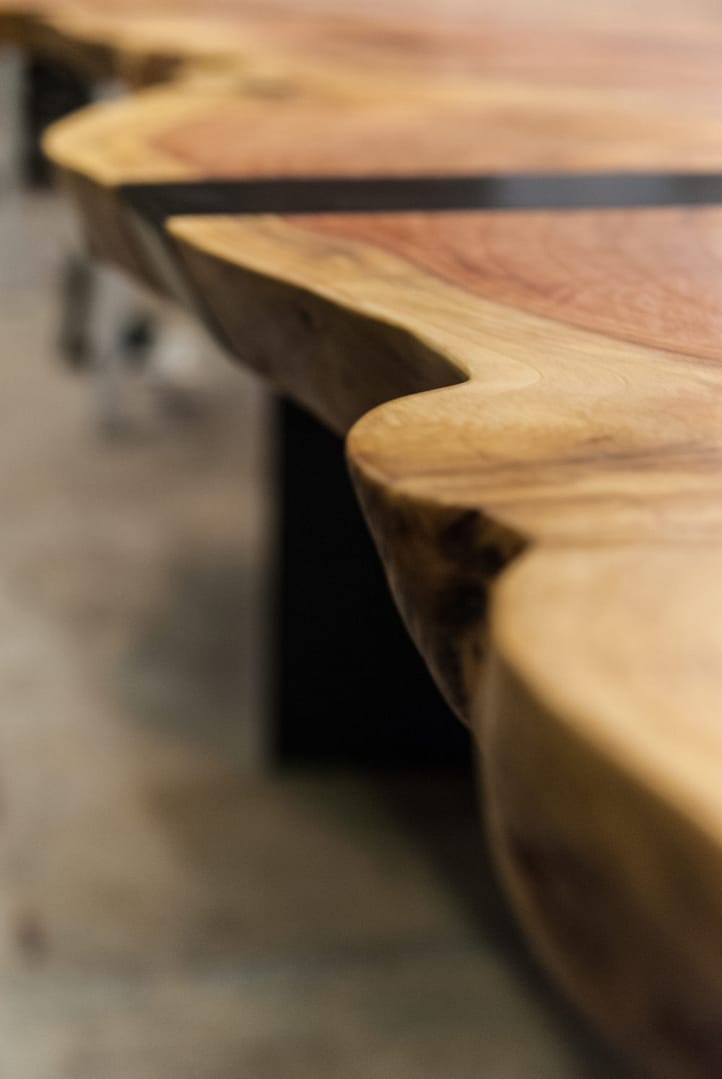
To ensure that the slab doesn’t try to creep or move in undesirable ways, the shop reinforced the structure with a steel frame on the table’s underside with slots to give the wood room to expand and contract in a controlled manner. 3” pocket screws drilled in opposing directions underneath are a final insurance policy that the Jenkins’s dream table will stay that way for a very long time to come.
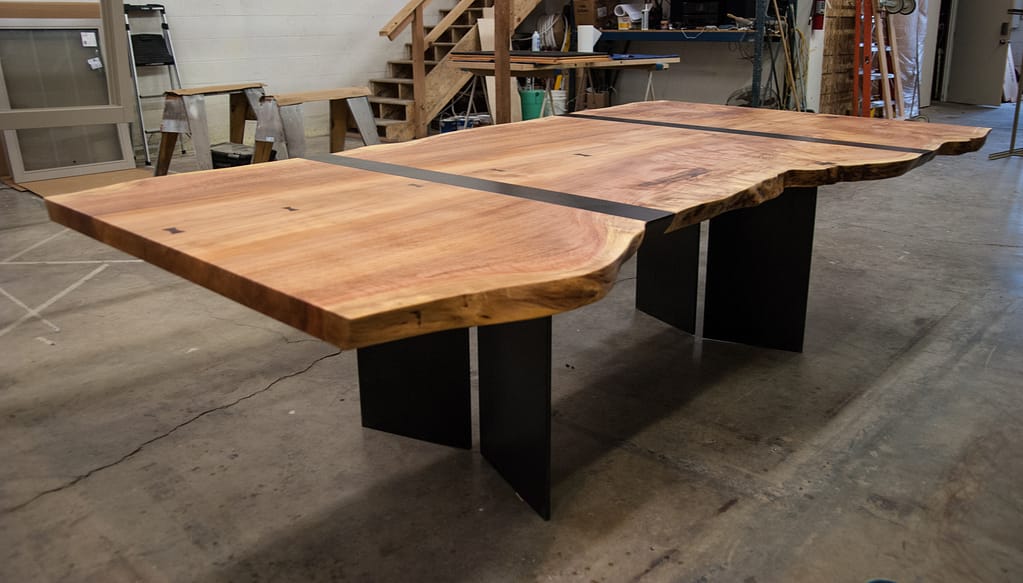
It was a long and winding road to the finished table, but everyone involved is thrilled with the results. It took incredible mastery of the materials and craft to save the table from its original condition, and Mac, Dan, and Josh are proud of how the shop was able to create something long lasting and beautiful out of such humble origins. And the clients are beyond happy to see their hopes fulfilled for that once raw, dusty slab.
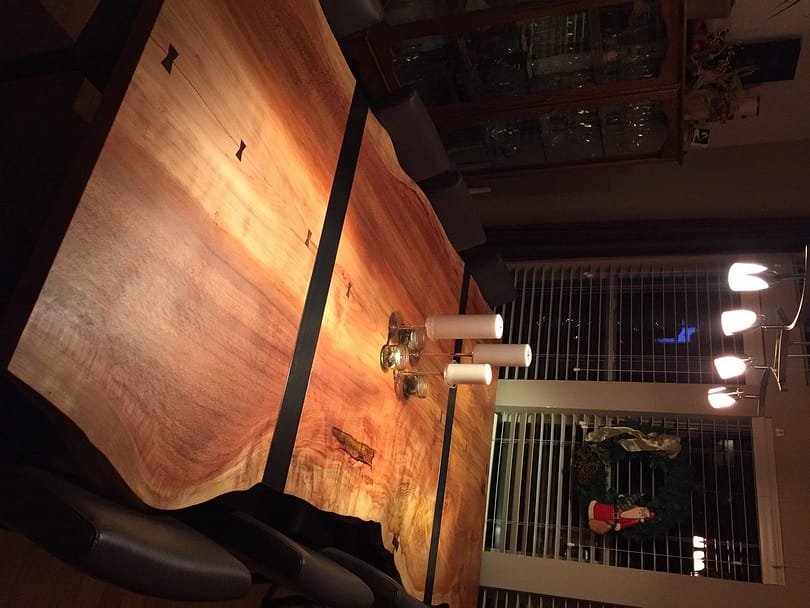
“It’s truly a piece of art, each area of the slab has its own characteristics and it is so much fun to just look at. We’ve done puzzles, played games, eaten, and just stared at the thing over the last several weeks,” Jenny says. “It’s something we have wanted for a long time: a table big enough to host almost everyone we know. Come for dinner one night – we’ll show you!”
Save
Save
Save
Save
Save
Save
Save

